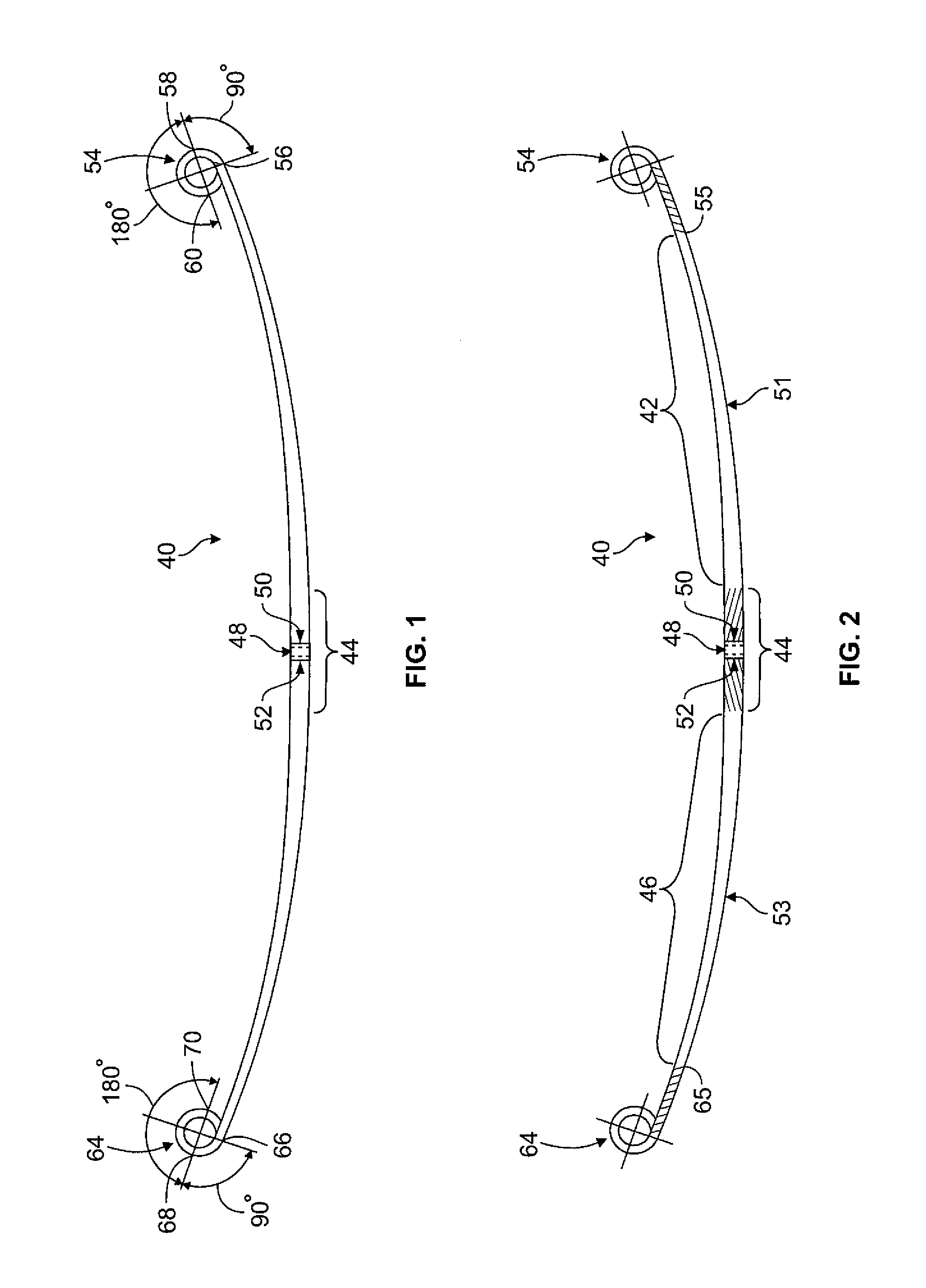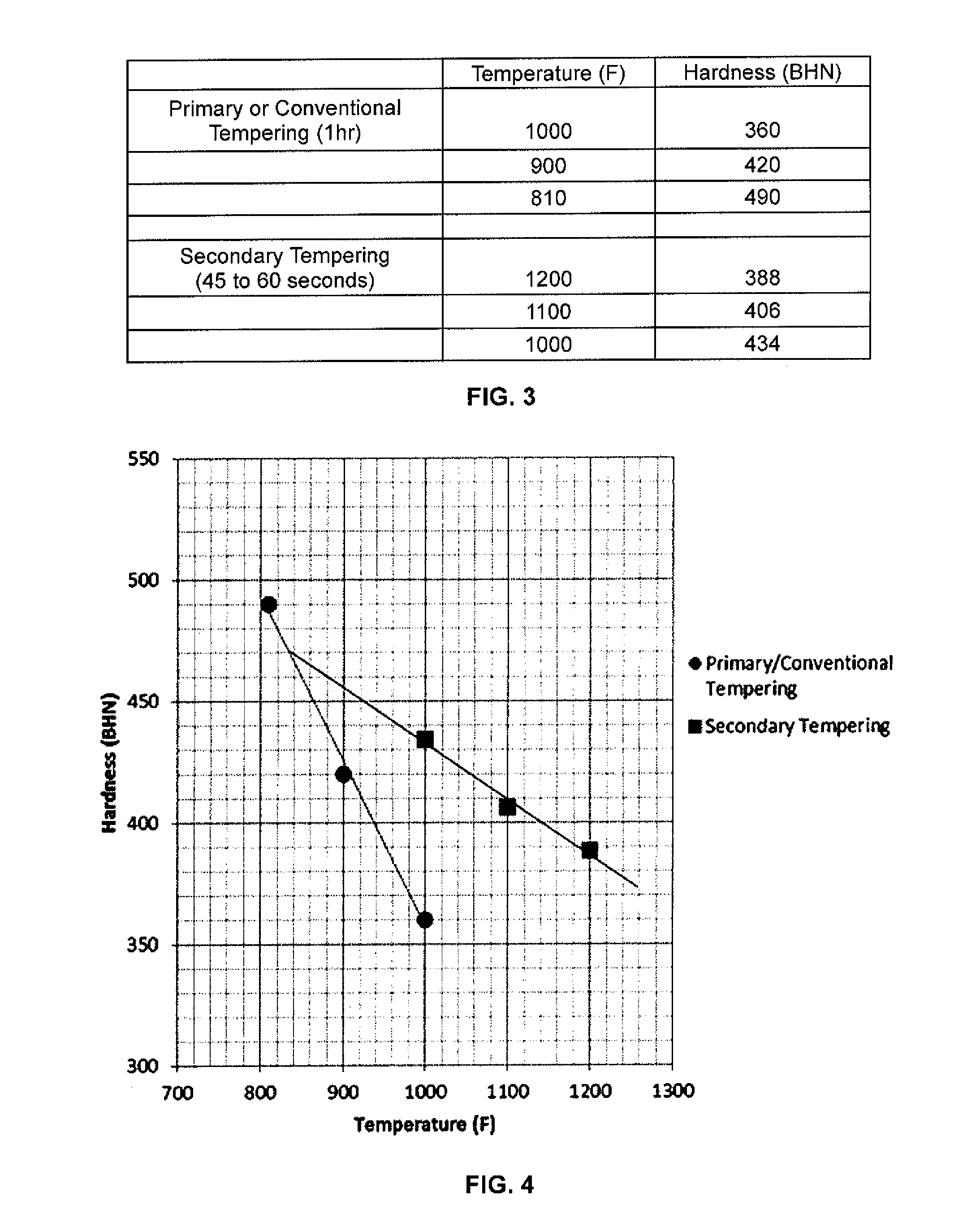Leaf spring and method of manufacture thereof having sections with different levels of through hardness
a technology of through hardness and leaf springs, which is applied in the field of leaf springs, can solve the problems of increasing the demands on the suspension system, increasing the incidence of early failures, so as to achieve the effect of reducing heat migration
- Summary
- Abstract
- Description
- Claims
- Application Information
AI Technical Summary
Benefits of technology
Problems solved by technology
Method used
Image
Examples
Embodiment Construction
[0019]This disclosure presents examples of leaf springs which have undergone secondary tempering, also referred to herein as selective tempering or retempering, and methods of manufacturing the same. The term “finished through hardness” shall mean the through hardness of a section of a leaf spring that is through hardened and then tempered and / or selectively tempered and subsequently quenched and will exclude the hardness values of any decarburized layer, which if present may extend, for example, to a depth of 0.1 mm to 0.25 mm below the surface of the leaf spring. The finished through hardness of a through hardened, secondarily tempered section or sections of a leaf spring prepared in accordance with this disclosure can be verified by obtaining Vickers micro-hardness hardness values in the section of interest at multiple depths (for example, in increments of 0.05 mm to a depth of 0.5 mm, and thereafter at depths of 0.75 mm, 1 mm, 2 mm, and 4 mm), excluding any measurements associat...
PUM
| Property | Measurement | Unit |
|---|---|---|
| temperature | aaaaa | aaaaa |
| temperature | aaaaa | aaaaa |
| temperature | aaaaa | aaaaa |
Abstract
Description
Claims
Application Information
 Login to view more
Login to view more - R&D Engineer
- R&D Manager
- IP Professional
- Industry Leading Data Capabilities
- Powerful AI technology
- Patent DNA Extraction
Browse by: Latest US Patents, China's latest patents, Technical Efficacy Thesaurus, Application Domain, Technology Topic.
© 2024 PatSnap. All rights reserved.Legal|Privacy policy|Modern Slavery Act Transparency Statement|Sitemap



